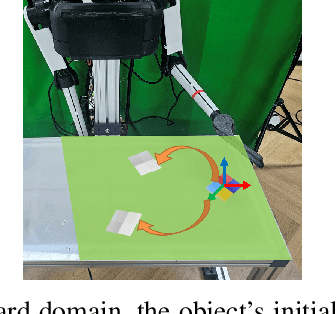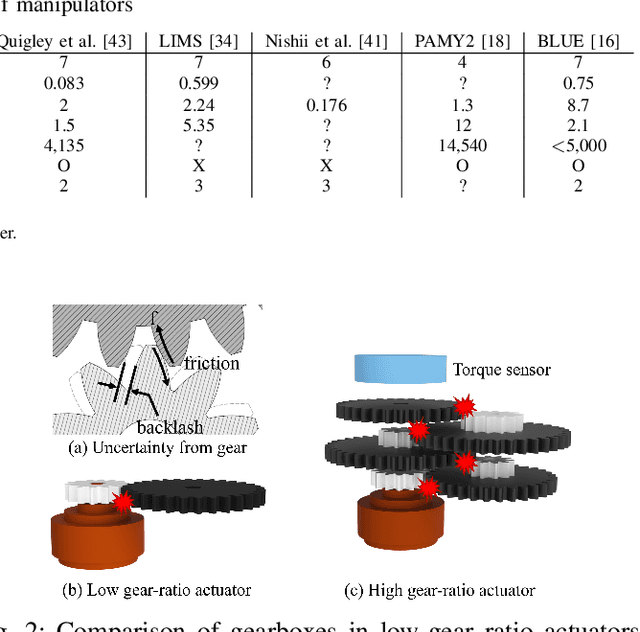Jaehyung Kim
TiTok: Transfer Token-level Knowledge via Contrastive Excess to Transplant LoRA
Oct 06, 2025Abstract:Large Language Models (LLMs) are widely applied in real world scenarios, but fine-tuning them comes with significant computational and storage costs. Parameter-Efficient Fine-Tuning (PEFT) methods such as LoRA mitigate these costs, but the adapted parameters are dependent on the base model and cannot be transferred across different backbones. One way to address this issue is through knowledge distillation, but its effectiveness inherently depends on training data. Recent work such as TransLoRA avoids this by generating synthetic data, but this adds complexity because it requires training an additional discriminator model. In this paper, we propose TiTok, a new framework that enables effective LoRA Transplantation through Token-level knowledge transfer. Specifically, TiTok captures task-relevant information through a contrastive excess between a source model with and without LoRA. This excess highlights informative tokens and enables selective filtering of synthetic data, all without additional models or overhead. Through experiments on three benchmarks across multiple transfer settings, our experiments show that the proposed method is consistently effective, achieving average performance gains of +4~8% compared to baselines overall.
Fast and Fluent Diffusion Language Models via Convolutional Decoding and Rejective Fine-tuning
Sep 18, 2025Abstract:Autoregressive (AR) language models generate text one token at a time, which limits their inference speed. Diffusion-based language models offer a promising alternative, as they can decode multiple tokens in parallel. However, we identify a key bottleneck in current diffusion LMs: the long decoding-window problem, where tokens generated far from the input context often become irrelevant or repetitive. Previous solutions like semi-autoregressive address this issue by splitting windows into blocks, but this sacrifices speed and bidirectionality, eliminating the main advantage of diffusion models. To overcome this, we propose Convolutional decoding (Conv), a normalization-based method that narrows the decoding window without hard segmentation, leading to better fluency and flexibility. Additionally, we introduce Rejecting Rule-based Fine-Tuning (R2FT), a post-hoc training scheme that better aligns tokens at positions far from context. Our methods achieve state-of-the-art results on open-ended generation benchmarks (e.g., AlpacaEval) among diffusion LM baselines, with significantly lower step size than previous works, demonstrating both speed and quality improvements.
Towards an Introspective Dynamic Model of Globally Distributed Computing Infrastructures
Jun 24, 2025Abstract:Large-scale scientific collaborations like ATLAS, Belle II, CMS, DUNE, and others involve hundreds of research institutes and thousands of researchers spread across the globe. These experiments generate petabytes of data, with volumes soon expected to reach exabytes. Consequently, there is a growing need for computation, including structured data processing from raw data to consumer-ready derived data, extensive Monte Carlo simulation campaigns, and a wide range of end-user analysis. To manage these computational and storage demands, centralized workflow and data management systems are implemented. However, decisions regarding data placement and payload allocation are often made disjointly and via heuristic means. A significant obstacle in adopting more effective heuristic or AI-driven solutions is the absence of a quick and reliable introspective dynamic model to evaluate and refine alternative approaches. In this study, we aim to develop such an interactive system using real-world data. By examining job execution records from the PanDA workflow management system, we have pinpointed key performance indicators such as queuing time, error rate, and the extent of remote data access. The dataset includes five months of activity. Additionally, we are creating a generative AI model to simulate time series of payloads, which incorporate visible features like category, event count, and submitting group, as well as hidden features like the total computational load-derived from existing PanDA records and computing site capabilities. These hidden features, which are not visible to job allocators, whether heuristic or AI-driven, influence factors such as queuing times and data movement.
Personalized LLM Decoding via Contrasting Personal Preference
Jun 13, 2025Abstract:As large language models (LLMs) are progressively deployed in various real-world applications, personalization of LLMs has become increasingly important. While various approaches to LLM personalization such as prompt-based and training-based methods have been actively explored, the development of effective decoding-time algorithms remains largely overlooked, despite their demonstrated potential. In this paper, we propose CoPe (Contrasting Personal Preference), a novel decoding-time approach applied after performing parameter-efficient fine-tuning (PEFT) on user-specific data. Our core idea is to leverage reward-guided decoding specifically for personalization by maximizing each user's implicit reward signal. We evaluate CoPe across five open-ended personalized text generation tasks. Our empirical results demonstrate that CoPe achieves strong performance, improving personalization by an average of 10.57% in ROUGE-L, without relying on external reward models or additional training procedures.
Collaborative LLM Inference via Planning for Efficient Reasoning
Jun 13, 2025



Abstract:Large language models (LLMs) excel at complex reasoning tasks, but those with strong capabilities (e.g., whose numbers of parameters are larger than 100B) are often accessible only through paid APIs, making them too costly for applications of frequent use. In contrast, smaller open-sourced LLMs (e.g., whose numbers of parameters are less than 3B) are freely available and easy to deploy locally (e.g., under a single GPU having 8G VRAM), but lack suff icient reasoning ability. This trade-off raises a natural question: can small (free) and large (costly) models collaborate at test time to combine their strengths? We propose a test-time collaboration framework in which a planner model first generates a plan, defined as a distilled and high-level abstraction of the problem. This plan serves as a lightweight intermediate that guides a reasoner model, which generates a complete solution. Small and large models take turns acting as planner and reasoner, exchanging plans in a multi-round cascade to collaboratively solve complex tasks. Our method achieves accuracy comparable to strong proprietary models alone, while significantly reducing reliance on paid inference. These results highlight planning as an effective prior for orchestrating cost-aware, cross-model inference under real-world deployment constraints.
Revisit What You See: Disclose Language Prior in Vision Tokens for Efficient Guided Decoding of LVLMs
Jun 11, 2025Abstract:Large Vision-Language Models (LVLMs) have demonstrated remarkable performance across various multimodal tasks by integrating visual perception with language understanding. However, conventional decoding strategies of LVLMs often fail to successfully utilize visual information, leading to visually ungrounded responses. While various approaches have been proposed to address this limitation, they typically require additional training, multi-step inference procedures, or external model dependencies. This paper introduces ReVisiT, a simple yet effective decoding method that references vision tokens to guide the text generation process in LVLMs. Our approach leverages the semantic information embedded within vision tokens by projecting them into the text token distribution space, and dynamically selecting the most relevant vision token at each decoding step through constrained divergence minimization. This selected vision token is then used to refine the output distribution to better incorporate visual semantics. Experiments on three LVLM hallucination benchmarks with two recent LVLMs demonstrate that ReVisiT consistently enhances visual grounding with minimal computational overhead. Moreover, our method achieves competitive or superior results relative to state-of-the-art baselines while reducing computational costs for up to $2\times$.
LLMs Think, But Not In Your Flow: Reasoning-Level Personalization for Black-Box Large Language Models
May 28, 2025Abstract:Large language models (LLMs) have recently achieved impressive performance across a wide range of natural language tasks and are now widely used in real-world applications. Among them, black-box LLMs--served via APIs without access to model internals--are especially dominant due to their scalability and ease of deployment. Despite their strong capabilities, these models typically produce generalized responses that overlook personal preferences and reasoning styles. This has led to growing interest in black-box LLM personalization, which aims to tailor model outputs to user-specific context without modifying model parameters. However, existing approaches primarily focus on response-level personalization, attempting to match final outputs without modeling personal thought process. To address this limitation, we propose RPM, a framework for reasoning-level personalization that aligns the model's reasoning process with a user's personalized logic. RPM first constructs statistical user-specific factors by extracting and grouping response-influential features from user history. It then builds personalized reasoning paths that reflect how these factors are used in context. In the inference stage, RPM retrieves reasoning-aligned examples for new queries via feature-level similarity and performs inference conditioned on the structured factors and retrieved reasoning paths, enabling the model to follow user-specific reasoning trajectories. This reasoning-level personalization enhances both predictive accuracy and interpretability by grounding model outputs in user-specific logic through structured information. Extensive experiments across diverse tasks show that RPM consistently outperforms response-level personalization methods, demonstrating the effectiveness of reasoning-level personalization in black-box LLMs.
Improving Chemical Understanding of LLMs via SMILES Parsing
May 22, 2025Abstract:Large language models (LLMs) are increasingly recognized as powerful tools for scientific discovery, particularly in molecular science. A fundamental requirement for these models is the ability to accurately understand molecular structures, commonly encoded in the SMILES representation. However, current LLMs struggle to interpret SMILES, even failing to carry out basic tasks such as counting molecular rings. To address this limitation, we introduce CLEANMOL, a novel framework that formulates SMILES parsing into a suite of clean and deterministic tasks explicitly designed to promote graph-level molecular comprehension. These tasks span from subgraph matching to global graph matching, providing structured supervision aligned with molecular structural properties. We construct a molecular pretraining dataset with adaptive difficulty scoring and pre-train open-source LLMs on these tasks. Our results show that CLEANMOL not only enhances structural comprehension but also achieves the best or competes with the baseline on the Mol-Instructions benchmark.
Extracting and Emulsifying Cultural Explanation to Improve Multilingual Capability of LLMs
Mar 07, 2025



Abstract:Large Language Models (LLMs) have achieved remarkable success, but their English-centric training data limits performance in non-English languages, highlighting the need for enhancements in their multilingual capabilities. While some work on multilingual prompting methods handles non-English queries by utilizing English translations or restructuring them to more closely align with LLM reasoning patterns, these works often overlook the importance of cultural context, limiting their effectiveness. To address this limitation, we propose EMCEI, a simple yet effective approach that improves LLMs' multilingual capabilities by incorporating cultural context for more accurate and appropriate responses. Specifically, EMCEI follows a two-step process that first extracts relevant cultural context from the LLM's parametric knowledge via prompting. Then, EMCEI employs an LLM-as-Judge mechanism to select the most appropriate response by balancing cultural relevance and reasoning ability. Experiments on diverse multilingual benchmarks show that EMCEI outperforms existing baselines, demonstrating its effectiveness in handling multilingual queries with LLMs.
Design of a low-cost and lightweight 6 DoF bimanual arm for dynamic and contact-rich manipulation
Feb 24, 2025



Abstract:Dynamic and contact-rich object manipulation, such as striking, snatching, or hammering, remains challenging for robotic systems due to hardware limitations. Most existing robots are constrained by high-inertia design, limited compliance, and reliance on expensive torque sensors. To address this, we introduce ARMADA (Affordable Robot for Manipulation and Dynamic Actions), a 6 degrees-of-freedom bimanual robot designed for dynamic manipulation research. ARMADA combines low-inertia, back-drivable actuators with a lightweight design, using readily available components and 3D-printed links for ease of assembly in research labs. The entire system, including both arms, is built for just $6,100. Each arm achieves speeds up to 6.16m/s, almost twice that of most collaborative robots, with a comparable payload of 2.5kg. We demonstrate ARMADA can perform dynamic manipulation like snatching, hammering, and bimanual throwing in real-world environments. We also showcase its effectiveness in reinforcement learning (RL) by training a non-prehensile manipulation policy in simulation and transferring it zero-shot to the real world, as well as human motion shadowing for dynamic bimanual object throwing. ARMADA is fully open-sourced with detailed assembly instructions, CAD models, URDFs, simulation, and learning codes. We highly recommend viewing the supplementary video at https://sites.google.com/view/im2-humanoid-arm.
 Add to Chrome
Add to Chrome Add to Firefox
Add to Firefox Add to Edge
Add to Edge